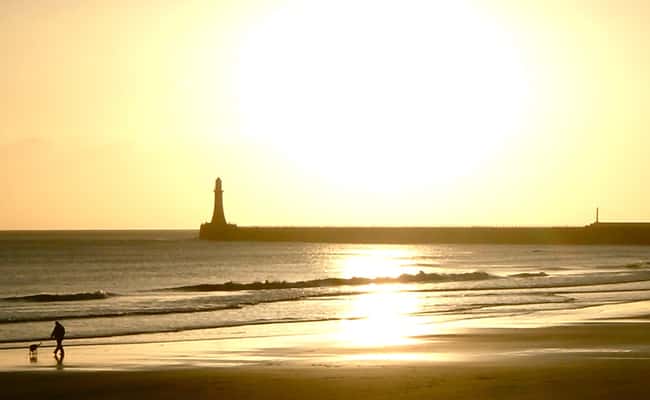Interview: Esther Johnson on making the North East’s most personal film, Asunder
26th April 2017The First World War was such a far-reaching and impactful conflict that the personal stories of those involved often get lost among the statistics, as do the specific regions of Britain that the war effected.
It was with this in mind that respected filmmaker Esther Johnson set about creating Asunder, the story of what happened to Tyneside and Wearside while the bulk of the struggle took place on foreign soil.
“I was approached to direct a film and music project with a focus on Sunderland and the North East due to the nature of my previous work – the creation of poetic documentary portraits that largely focus on marginal worlds to reveal resonant stories that may otherwise remain hidden or ignored. Having an interest in the history of the early 1900s I was keen to work on a project that reflected on the massive changes in society and culture during the First World War.
“I am interested in the effects of progress and societal change on communities, and how the universal impacts on the individual. For Asunder I wanted to focus on revealing stories that you don’t hear about – moments of magic during the horror, attempts at finding normality in abnormal circumstances – to find a new way of understanding the war,” she said.
To do so, Johnson merged archive footage with her own contemporary shots of the North East, while fusing narration with a live orchestra soundtrack. Prior to the films premiere at the Sunderland Empire last year, a soundtrack was recorded – and it’s that soundtrack which will be showcased at the Arts Centre Washington on April 19.
Another of Johnson’s aims was to unearth the stories of everyday members of communities that, like everywhere else, were changed irreparably by the events between 1914 and 1918: “After researching the stories of many individuals from the North East, I was keen to include varied viewpoints from those that experienced life on the Home Front and the Western Front.”
Those views include those of Sunderland footballer Norman Gaudie, a conscientious objector who was sentenced to death, Lisbeth Simm, who campaigned vehemently for women’s rights, and Robert Hepple, a 19-year-old soldier shot at dawn for desertion.
To lend these stories the weight they deserved, Johnson needed a narrator whose delivery was equally profound. She called upon Sunderland’s own Kate Adie, who was of paramount importance to the film: “Right from the beginning I wanted to have a female voice narrating the film. It was a period of tremendous change for women, what with the suffrage movement, female football, and the opening up of jobs for women.
“Kate Adie grew up in Sunderland and I envisaged her voice would tell the people’s stories in the film. Adie has also written a very interesting book about women during the war, titled, Fighting on the Home Front: The Legacy of Women in World War One, so is somewhat of an expert in this area,” Johnson said.
A project like this one unearths passion in the film maker as well as the audience, with Johnson’s hometown of Hull giving her her own perspective of the war’s effect on the North of England: “The project was extremely rewarding for me. I grew up in Hull and I believe there are many fascinating narratives of the ‘North’ that are yet to be mined. I’m extremely happy at being able to spend a lot of time researching in archives so this aspect of the project was especially enriching for me – learning so much about a remarkable moment in history that we can still see the repercussions of today.”
The personal touch that Johnson was able to lend the film extended beyond her hometown and into her own family tree: “My great-grandfather was killed on Valentine’s Day in 1916 in Sanctuary Wood, near Ypres, Belgium. He was never to meet his daughter who was born six days before he was killed. He is buried in Ypres Reservoir Cemetery and his name is included in a war memorial in Hull’s Paragon Train Station that was unveiled a few years back.”
Johnson is one of countless people who can trace the effect of the First World War back through their own ancestry – and that is the reason a film like this had to be made, and why Johnson was the right person to make it: “During my research I was able to contact eight living relatives of some of the film characters, finding out details of the lives of their ancestors and adding further dimension to their stories. It was also rewarding to be able to pass on my research to these families, some of the material (which their ancestors had written) they didn’t know existed.”
To be given a fresh perspective on the First World War head to the Arts Centre Washington on April 19 at 1:30pm and 7:00pm. Tickets can be purchased at: http://bit.ly/2p48Gcs


